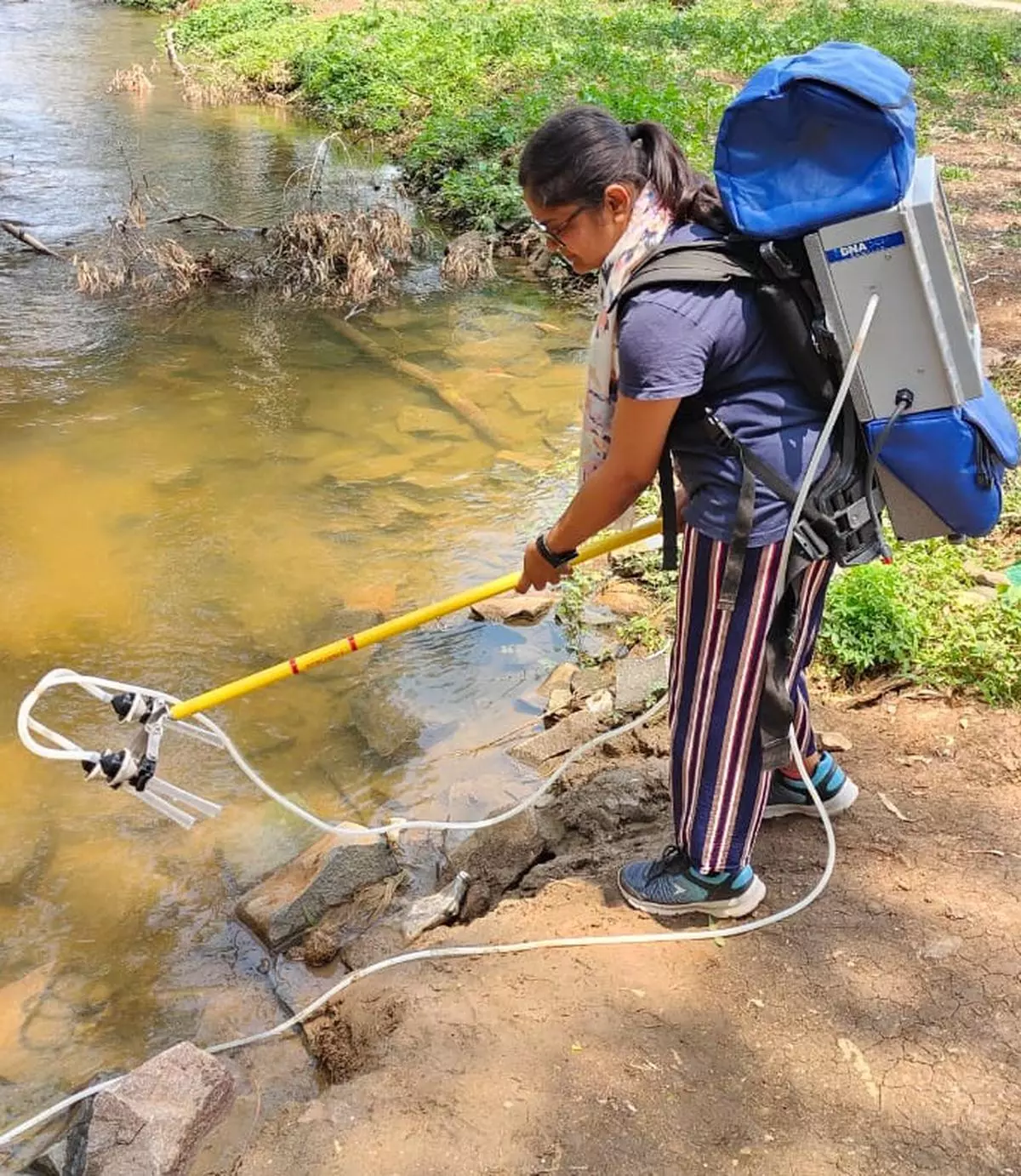CSIR - Centre for Cellular & Molecular Biology
Council of Scientific and Industrial Research
The Innovation Engine of India
Date : August 22, 2024

Researchers need not go around to collect samples of all organisms in a physical setting to assess the total biodiversity of any ecosystem. Thanks to a new method developed by the researchers at the Laboratory for the Conservation of Endangered Species (LaCONES), one can pick just a few litres of water, soil, or even air.
Vinay K. Nandicoori, Director of CCMB, said that the new method is cheaper, faster, and highly scalable to large freshwater and marine ecosystems which can help in monitoring and conserving the rich biodiversity of our country.
LaCONES is a CSIR-Centre for Cellular and Molecular Biology (CCMB) laboratory headquartered in Hyderabad.
They followed a molecular approach to extract and read the genetic information encoded in free-floating environmental DNA (eDNA). eDNA is DNA shed by all organisms into their surroundings through natural processes during their lifetime or after death.
The new non-invasive method can assess the total biodiversity of any ecosystem by sequencing the DNA fragments found in the environmental samples such as water, soil or air. This method can detect all kinds of organisms, including viruses, bacteria, archaea, and eukaryotes such as fungi, plants, insects, birds, fish and other animals from just a few litres of water sample without any direct capture or counting of species.
The findings, were published in the journal Ecological Indicators, shows that to monitor and conserve biodiversity, scientists need to survey organisms living in different habitats and track their changes over time.
“But the available biodiversity assessment methods cannot estimate the total species diversity accounting for all the microbes and non-microbes that inhabit an ecosystem. The traditional monitoring methods also require extensive taxonomic expertise,” a LaCONES official said.
“They are not scalable to large ecosystems because they can be expensive, labour-intensive and time-consuming,” he said.
In this method developed by S. Manu and G Umapathy at the CCMB, scientists can filter out eDNA from environmental samples, read their sequences, and thus, identify the source of the eDNA.
They tested their method in the highly biodiverse wetland ecosystem of Chilika Lagoon in Odisha, the country’s largest brackish water lagoon. By comparing over 10 billion sequences of eDNA fragments from multiple seasonal samples with a large database of reference sequences from all the known species, the researchers were able to detect organisms across the tree of life.
“They estimated that the total taxonomic diversity of Chilika Lagoon is about 1,071 families across the tree of life, comprising about 799 families of eukaryotes, 230 families of bacteria, 27 families of archaea, and 13 families of DNA viruses,” the CCMB official said.
 Advertisement no 07/10 for the post Junior Scientist.
Advertisement no 07/10 for the post Junior Scientist.
 List of shortlisted candidates for the temporary positions against CCMB Web Notif.No.0724/B- [26-08-2024]
List of shortlisted candidates for the temporary positions against CCMB Web Notif.No.0724/B- [26-08-2024]
 Result of selected candidates for the temporary positions against CCMB Web Notif.No.0724/A - [21-08-2024]
Result of selected candidates for the temporary positions against CCMB Web Notif.No.0724/A - [21-08-2024]
 Notification of Schedule for Trade Test and Downloading of Admit Cards for the posts of Gr. II (1)/Technician (1) against Advt.No:01/2021 - [19-08-2024]
Notification of Schedule for Trade Test and Downloading of Admit Cards for the posts of Gr. II (1)/Technician (1) against Advt.No:01/2021 - [19-08-2024]
 List of selected candidates for the temporary positions against CCMB Web Notif.No.0624/A - [14-08-2024]
List of selected candidates for the temporary positions against CCMB Web Notif.No.0624/A - [14-08-2024]
 List of shortlisted candidates for the temporary positions against CCMB Web Notif.No.0724/A - [02-08-2024]
List of shortlisted candidates for the temporary positions against CCMB Web Notif.No.0724/A - [02-08-2024]
 Notification No.0824/A for various temporary positions on contractual basis- [02-08-2024]
Notification No.0824/A for various temporary positions on contractual basis- [02-08-2024]
 Notification No.0724/B for various temporary positions on contractual basis - [29-07-2024]
Notification No.0724/B for various temporary positions on contractual basis - [29-07-2024]
 List of shortlisted candidates for the temporary positions against CCMB Web Notif.No.0624/A- [19-07-2024]
List of shortlisted candidates for the temporary positions against CCMB Web Notif.No.0624/A- [19-07-2024]
 List of Provisionally empanelled candidates for Engagement as Project staff Vide Notif.No.2024/1 - [15-07-2024]
List of Provisionally empanelled candidates for Engagement as Project staff Vide Notif.No.2024/1 - [15-07-2024]